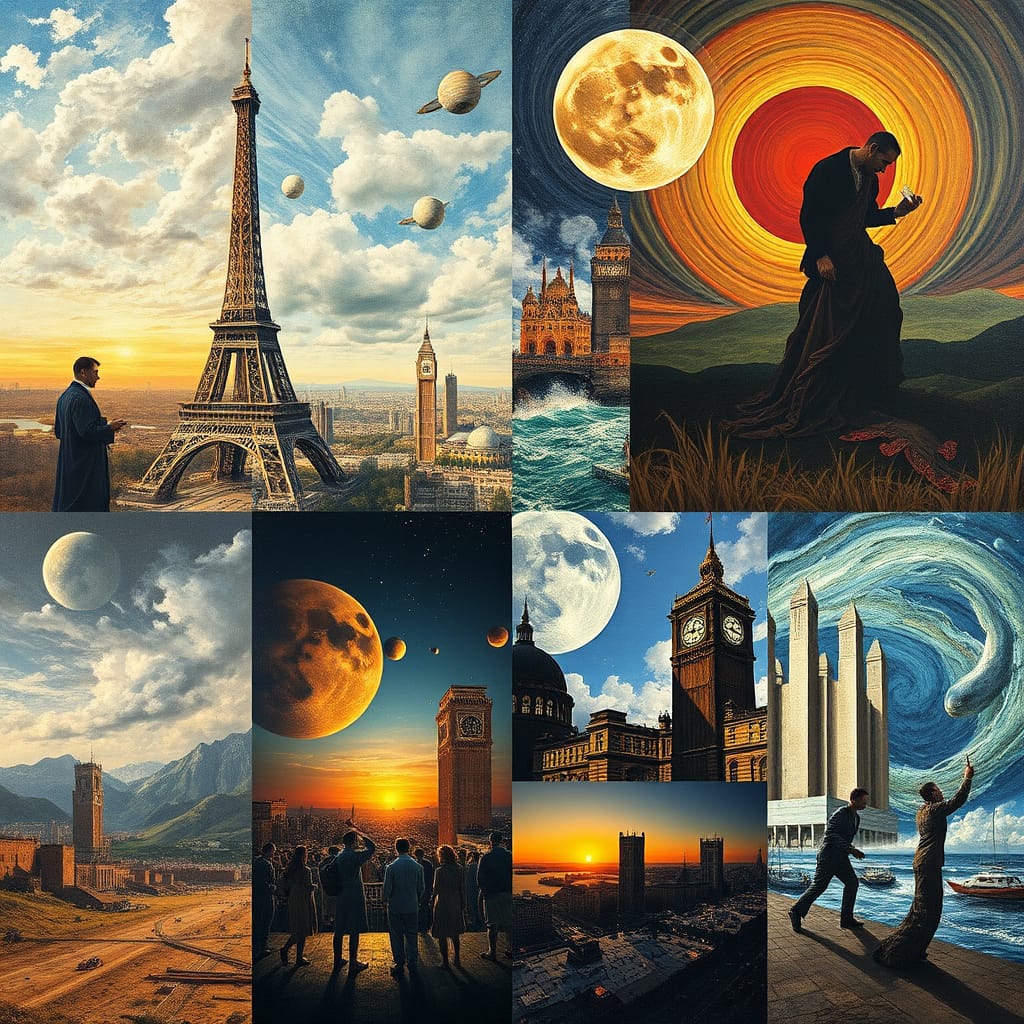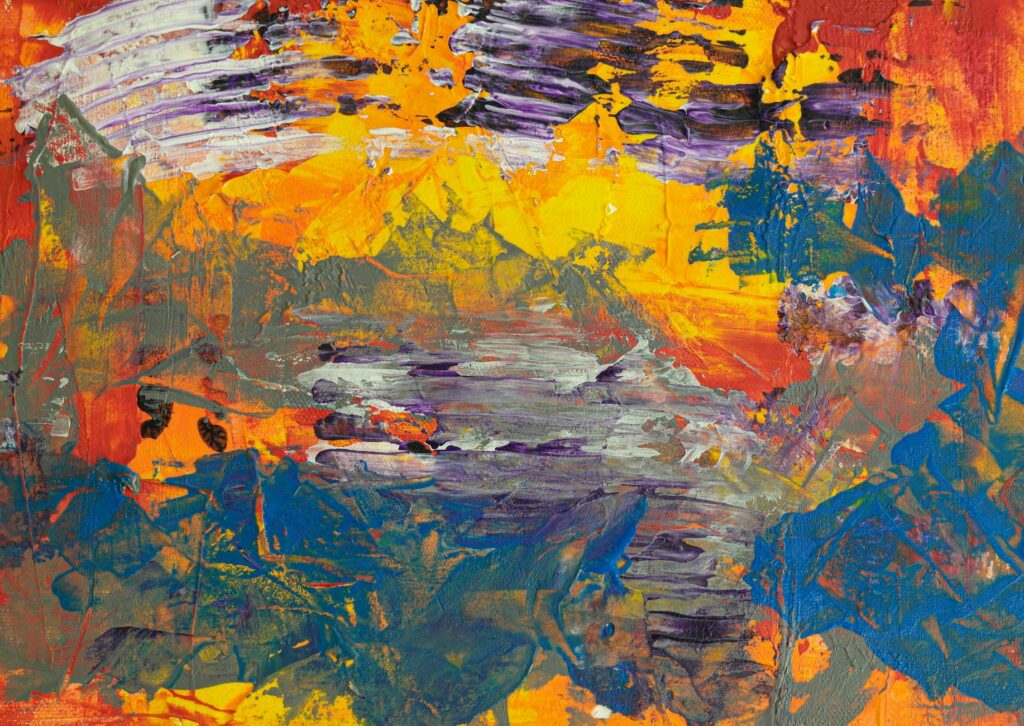Embark on a journey to Identify Different Art Movements and unlock the secrets of artistic expression! Each movement is a unique chapter in the story of human creativity, defined by shared philosophies, visual elements, and innovative techniques. By learning to recognize these distinct styles, you’ll elevate your art appreciation, whether you’re exploring a museum, building a collection, or simply marveling at the diverse tapestry of artistic history. Mastering the visual language of art movements allows you to forge deeper connections with the artworks and the cultural landscapes that inspired them.
Key Points:
- Art movements are identified through visual characteristics, historical context, signature techniques, and influential artists
- Each movement responds to its predecessors and reflects the social, political, and technological climate of its time
- Formal elements like color, composition, brushwork, and subject matter provide important clues
- Recognizing art movements enhances museum visits, collecting decisions, and overall art appreciation
- This guide covers movements from Renaissance to Contemporary art with visual identification markers
Why Identifying Art Movements Matters
Understanding different art movements is like learning multiple languages that allow you to “read” paintings more effectively. Each movement has its unique vocabulary of visual elements, philosophical underpinnings, and historical significance. When you can identify a painting’s movement, you unlock deeper layers of meaning and context.
Art identification skills help you:
- Engage more meaningfully with museum collections
- Make informed decisions when collecting or purchasing art
- Appreciate the evolution of artistic expression through time
- Understand how art reflects broader cultural and historical forces
- Develop your own artistic preferences and sensibilities
The Timeline of Major Art Movements
Art movements rarely have precise start and end dates, often overlapping and influencing one another. However, a general chronological understanding provides a helpful framework for identification.
| Time Period | Major Art Movements |
|---|---|
| 1400-1600 | Renaissance |
| 1600-1750 | Baroque, Rococo |
| 1750-1850 | Neoclassicism, Romanticism |
| 1850-1900 | Realism, Impressionism, Post-Impressionism |
| 1900-1945 | Fauvism, Expressionism, Cubism, Futurism, Dada, Surrealism |
| 1945-1970 | Abstract Expressionism, Pop Art, Minimalism |
| 1970-Present | Postmodernism, Contemporary |
Renaissance Art (1400-1600): Harmony and Perspective
Renaissance art represents a rebirth of classical ideals with an emphasis on harmony, balance, and mathematical precision.
How to identify Renaissance art:
- Linear perspective creating realistic depth
- Balanced, symmetrical compositions
- Religious themes and mythological subjects
- Naturalistic human figures with idealized proportions
- Smooth brushwork with minimal texture
- Rich, jewel-tone colors with clear light sources
Key artists: Leonardo da Vinci, Michelangelo, Raphael, Botticelli
“The noblest pleasure is the joy of understanding.”
Leonardo da Vinci
For a deeper exploration of this foundational period, see our guide to Renaissance Art: A Beginner’s Guide.
Baroque Art (1600-1750): Drama and Movement
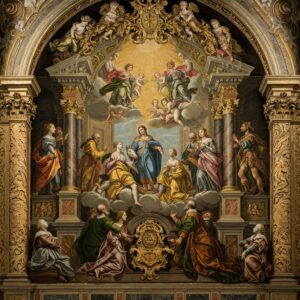
Baroque art emerged as a response to the Protestant Reformation, with Catholic countries embracing an emotionally intense, dramatic style.
How to identify Baroque art:
- Dynamic, diagonal compositions
- Dramatic contrast between light and shadow (chiaroscuro)
- Theatrical, emotional scenes full of movement
- Rich, saturated colors
- Elaborate detail and ornamentation
- Religious ecstasy, martyrdom, and momentary actions
Key artists: Caravaggio, Rembrandt, Rubens, Vermeer
The dramatic lighting techniques pioneered during this period continue to influence artists today, as explored in our article on The Rebel with a Brush: Uncovering the Turbulent Genius of Caravaggio.
Impressionism (1860s-1890s): Light and Atmosphere
Impressionism broke with academic traditions by focusing on capturing fleeting moments of light and color in everyday scenes.

How to identify Impressionist art:
- Visible, loose brushstrokes
- Emphasis on changing light and its effects
- Ordinary subject matter (landscapes, city scenes, leisure activities)
- Outdoor (en plein air) painting
- Vibrant, pure colors applied separately rather than blended
- Sense of spontaneity and movement
Key artists: Claude Monet, Pierre-Auguste Renoir, Edgar Degas, Berthe Morisot
Light techniques pioneered by Impressionists revolutionized painting forever, as detailed in Mastering Impressionism Light Techniques.
Post-Impressionism (1886-1905): Form and Emotion
Post-Impressionists built on Impressionist innovations while emphasizing structure, form, and emotional expression.
How to identify Post-Impressionist art:
- Bold, non-naturalistic colors
- Thicker paint application
- Distorted forms for emotional effect
- Symbolic content and personal vision
- Defined shapes and outlines
- More structured compositions than Impressionism
Key artists: Vincent van Gogh, Paul Cézanne, Paul Gauguin, Georges Seurat
For a comprehensive look at these innovative artists, visit Unveiling the Brilliance of Post-Impressionist Artists.
Cubism (1907-1920s): Multiple Perspectives

Cubism radically reimagined representation by breaking objects into geometric forms viewed from multiple angles simultaneously.
How to identify Cubist art:
- Fragmentation of forms into geometric shapes
- Multiple viewpoints presented simultaneously
- Flattened, compressed picture plane
- Limited, often muted color palette
- Collage elements (in later Synthetic Cubism)
- Everyday objects as subject matter
Key artists: Pablo Picasso, Georges Braque, Juan Gris, Fernand Léger
Learn more about this revolutionary movement in What is Cubism? A Beginner’s Guide and How to Identify Cubist Art: Tips for Beginners.
Surrealism (1920s-1950s): Dreams and the Unconscious
Surrealism explored the realm of dreams and the unconscious mind, creating bizarre juxtapositions and fantastical imagery.
How to identify Surrealist art:
- Unexpected, illogical combinations of objects
- Dreamlike or nightmarish qualities
- Meticulous rendering of impossible scenes
- Biomorphic forms and metamorphosis
- References to Freudian symbolism
- Techniques like automatism and decalcomania
Key artists: Salvador Dalí, René Magritte, Joan Miró, Frida Kahlo
Discover the mind-bending world of Salvador Dalí in 10 Salvador Dalí Paintings That Will Blow Your Mind and explore the work of surrealist master René Magritte in René Magritte: The Master of Surrealism.
Abstract Expressionism (1940s-1950s): Gesture and Emotion
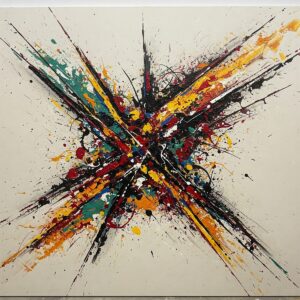
Abstract Expressionism emerged after World War II in America, emphasizing spontaneous creation and emotional intensity.
How to identify Abstract Expressionist art:
- Large-scale canvases
- Non-representational forms
- Emphasis on the act of painting itself
- Energetic, gestural brushwork
- All-over composition without focal point (in “action painting”)
- Color field paintings with large areas of solid color
Key artists: Jackson Pollock, Mark Rothko, Willem de Kooning, Helen Frankenthaler
For a deeper exploration of abstraction, visit Unlock the Secrets of Abstract Painting: A Comprehensive Guide.
Pop Art (1950s-1970s): Consumer Culture
Pop Art drew inspiration from popular culture and mass media, often with ironic commentary on consumer society.
How to identify Pop Art:
- Imagery from advertising, comics, and consumer products
- Bold, flat colors
- Hard edges and clear outlines
- Mechanical or commercial production techniques
- Repetition of images
- Celebrity portraits and iconic objects
Key artists: Andy Warhol, Roy Lichtenstein, Claes Oldenburg, James Rosenquist
Learn about the lasting impact of this movement in The Vibrant Legacy of Pop Art: How It Shapes Our Modern World.
Contemporary Art (1970s-Present): Diversity and Hybridity
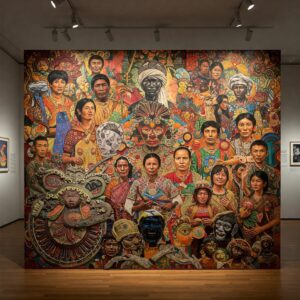
Contemporary art defies easy categorization, embracing diversity, hybridity, and global perspectives.
How to identify Contemporary art:
- Blending of traditional and new media
- Conceptual approaches prioritizing ideas over aesthetics
- Digital and technological elements
- Social and political commentary
- Identity exploration (race, gender, sexuality)
- Appropriation and recontextualization of existing images
Key artists: Gerhard Richter, Cindy Sherman, Ai Weiwei, Yayoi Kusama
For insights into distinguishing modern from contemporary art, see Modern vs. Contemporary Art: Unraveling the Creative Puzzle.
Practical Tips for Art Movement Identification
Art Genre Analyzer
Upload a painting to discover its artistic genre and style
Upload Your Painting
Click to select an image file
Analyzing artistic style and genre...
Renaissance
85% confidenceAnalysis Reasoning
Based on the classical composition and realistic style...
Key Characteristics
How It Works
Upload a painting image using the area above
Our AI analyzes the artistic style and characteristics
Receive detailed genre classification and reasoning
Focus on These Key Elements:
- Time Period: When was the artwork created?
- Visual Characteristics: What are the dominant visual elements?
- Subject Matter: What is being depicted?
- Techniques: How was the paint applied?
- Cultural Context: What was happening historically during this period?
Practice Your Skills:
- Visit museums with different galleries organized by period
- Use museum audio guides that highlight movement characteristics
- Create flashcards with key visual identifiers for each movement
- Compare works from different movements side by side
- Take art history courses or watch educational videos online
The Evolution of Art Movements
Art movements don’t exist in isolation—each responds to what came before. Understanding this evolutionary chain helps with identification. For example, Impressionism rejected Academic painting’s polished finish, while Post-Impressionism reacted against Impressionism’s emphasis on visual perception over structure and emotion.
For a comprehensive overview of this evolution, see The Evolution of Art Movements: From Renaissance to Postmodernism.
Conclusion: Becoming Fluent in Visual Language
Identifying art movements is a skill that develops over time with exposure and practice. The more art you see, the more comfortable you’ll become recognizing the distinctive characteristics of each period. This knowledge enriches your experience with art, allowing you to appreciate not just what you’re seeing, but its place in the grand narrative of artistic development.
Art movements remind us that creativity doesn’t happen in a vacuum—it responds to cultural forces, technological innovations, and the dialogue between artists across time. As you develop your identification skills, you’ll gain a deeper appreciation for how art both reflects and shapes the world around it.
For more insights into painting styles and movements, explore our comprehensive guide: Painting Styles and Movements: A Comprehensive Guide.

